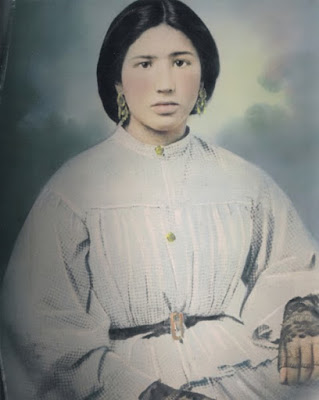How do you put a name to an unknown face?
1. First you curse the previous owner of the image for not putting
an identifying note on the back of the photo.
2.Then add up the facts you know
about the picture.
3. Now take your best guess based on the gathered facts.
Here is what we know about this picture:
* This young woman’s portrait is one of a pair
with the Jose Maria Maltos portrait it has the same treatment with the same
frame.
* Notes on the back Jose Maria image (a different print) say "take
care of papa" it is written by his grand daughter Emma Maltos" We
have a positive identity for his picture.
* The hair and costume of the young woman is
in the style of the 1860-70s.
* Jose Maria did not marry until around 1868. His bride Senona Diaz Luna de Luera was a
widow in her thirties. The woman in this picture is younger. So we are fairly certain it is not Senona.
Our best guess is this is his younger sister, Antonia, photographed sometime in
the mid 1860s. We know Antonia was important to Jose Maria. He named his second son Antonio after his sister. When Antonia came the California the census information tells us she was about sixteen. The girl in the photo is just about the right age. While we have no direct proof of this madam's identity, our intuition tells us this is Antonia.
Linda Allison July 2015





